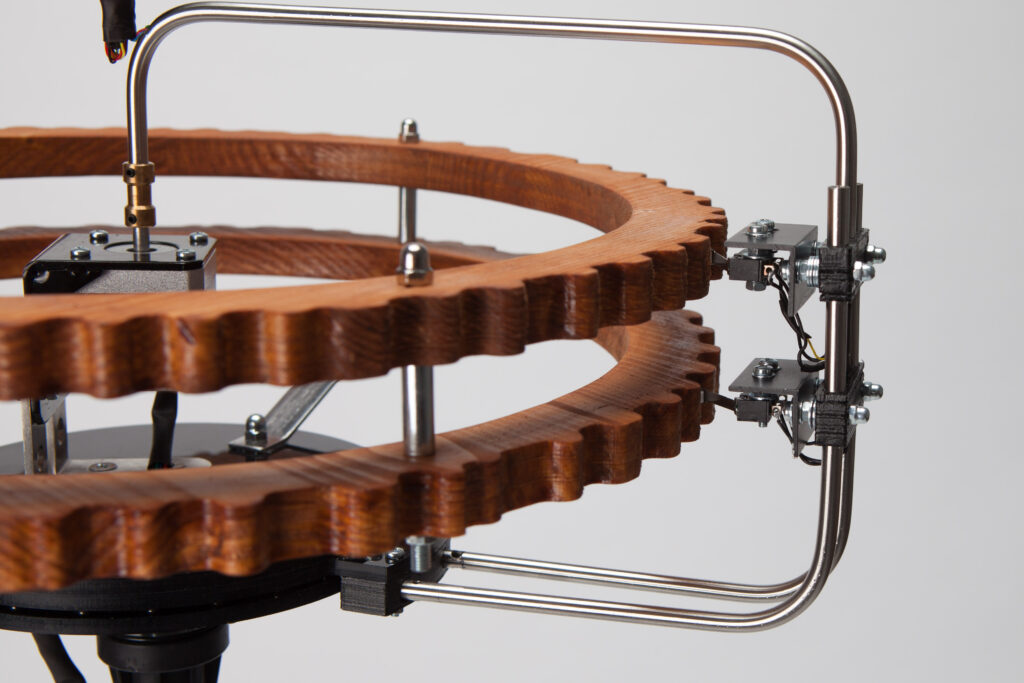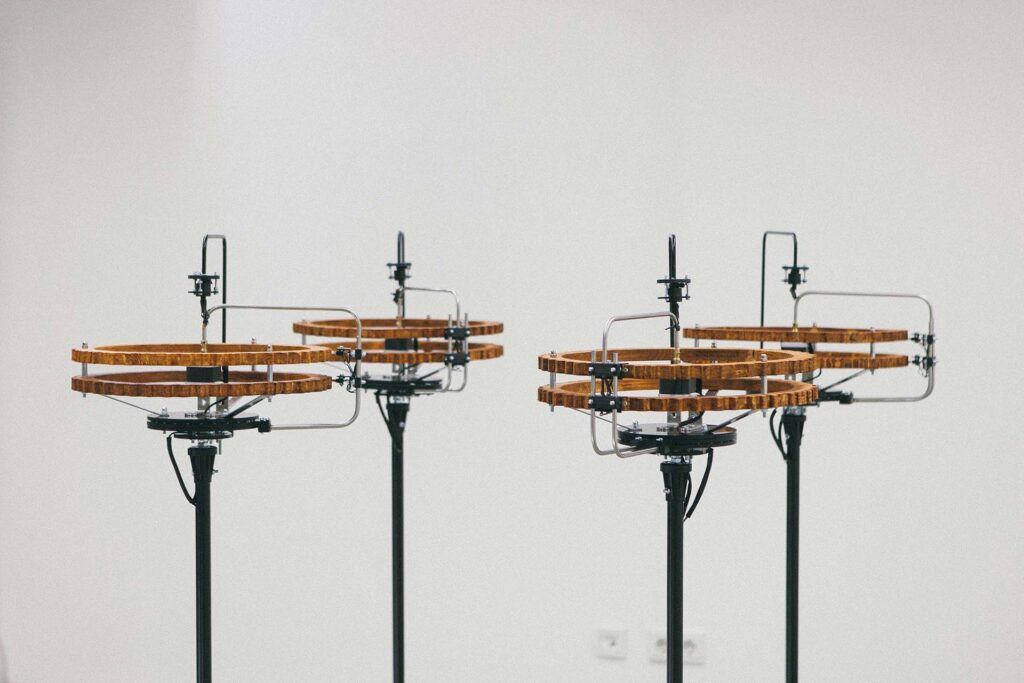
Aseen here, Bit by Jonghong Park at the University of the Arts Bremen is a beautiful visualization of how everything is linked together using the Markov chain algorithm. This installation uses an Arduino Mega for control, rotating arms that hold a pair of microswitches around coaxial gear-shaped cylinders.
In the sequence, one arm turns, then lobes on these “gears” that represent a two-bit number push the microswiches. This number is used to choose the following stepper to be turned in the sequence. The next selected arm then rotates in the same manner. This predictable cycle continues on and on clicking in a way that’s related, but not without careful observation.

The installation ‘bit’ represents a natural random process based on the principle of a Markov chain. Each machine consists of “information” engraved on the read head and an “event” caused by the operation of the motor. Machines are linked together based on a Markov chain algorithm to influence events, and eventually we can predict which of the four machines will move in the next turn. The movements of these four machines are shown as a random process, but in fact they are sequence of events. Like an invisible chain, all things and events in our world are connected.
Each of the four machines has its own state, which have been named ( 0,0 / 0,1 / 1,0 / 1,1 ), respectively. Each machine is equipped with a wooden read head with binary information on the surface and a microswitch to read the current state of the read head. The microswitch is connected to the stepper motors located in the center of the machine. A machine whose state is called moves the stepper motors by 1/240 of a degree. The microswitch turns on / off (1/0) along the surface of the read head each time the motor moves and calls the next machine corresponding to the state (2-Bit) of the current position of the read head. At this time, the machine corresponding to the measured state goes through the same process and calls another machine or itself.
These four machines symbolize another system separate from ours. We observe machines separate from the world as if we were watching computer simulations. The binary digits recorded in the read head are the smallest units of unspecified information possible, called bits. The bit, as the smallest particle that can make up the world and not simply as a digital recording unit, symbolizes the basis of this world. The things that we call noise, the information that we think of as meaningless, the information from which we cannot find the pattern, and the information that we cannot decode are called “chance”. When this information can be observed from outside our own world, we have proven through the Markov chain that all events are linked together.
The interplay concept is certainly interesting, and it’s pleasing to watch in the video below from a purely aesthetics point of view as well.
from Arduino Blog http://bit.ly/2Q115dZ






0 commentaires:
Enregistrer un commentaire